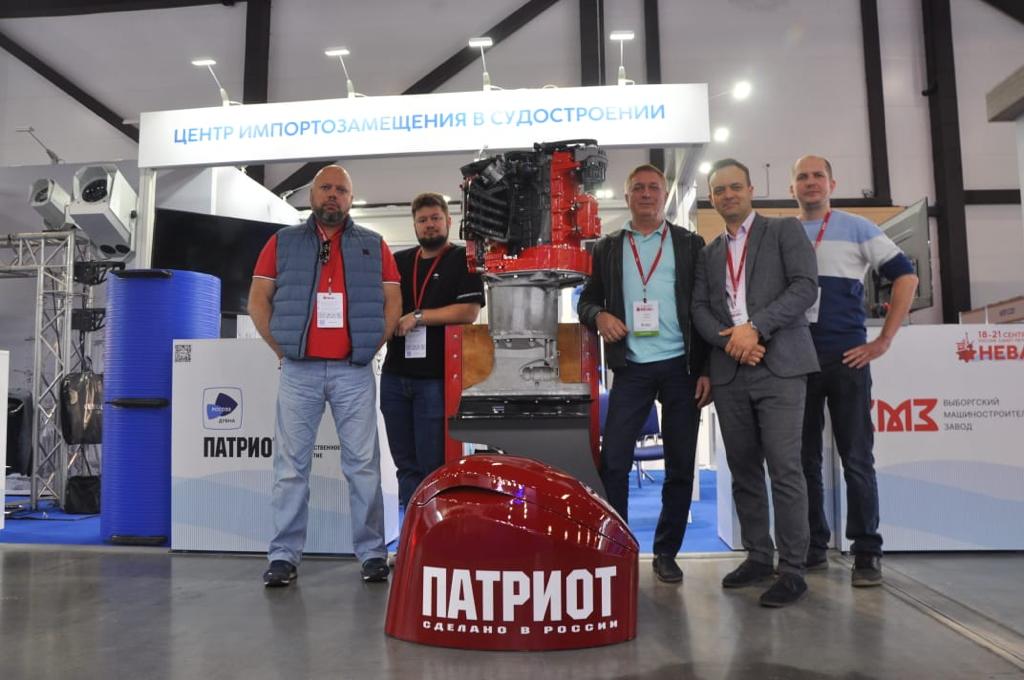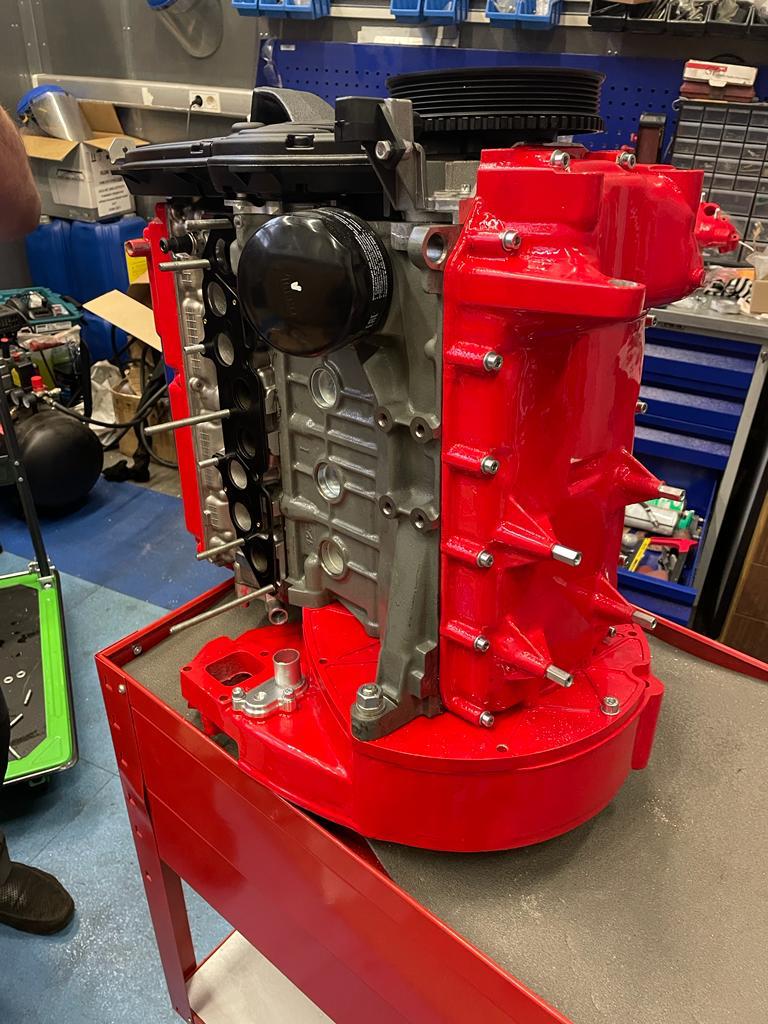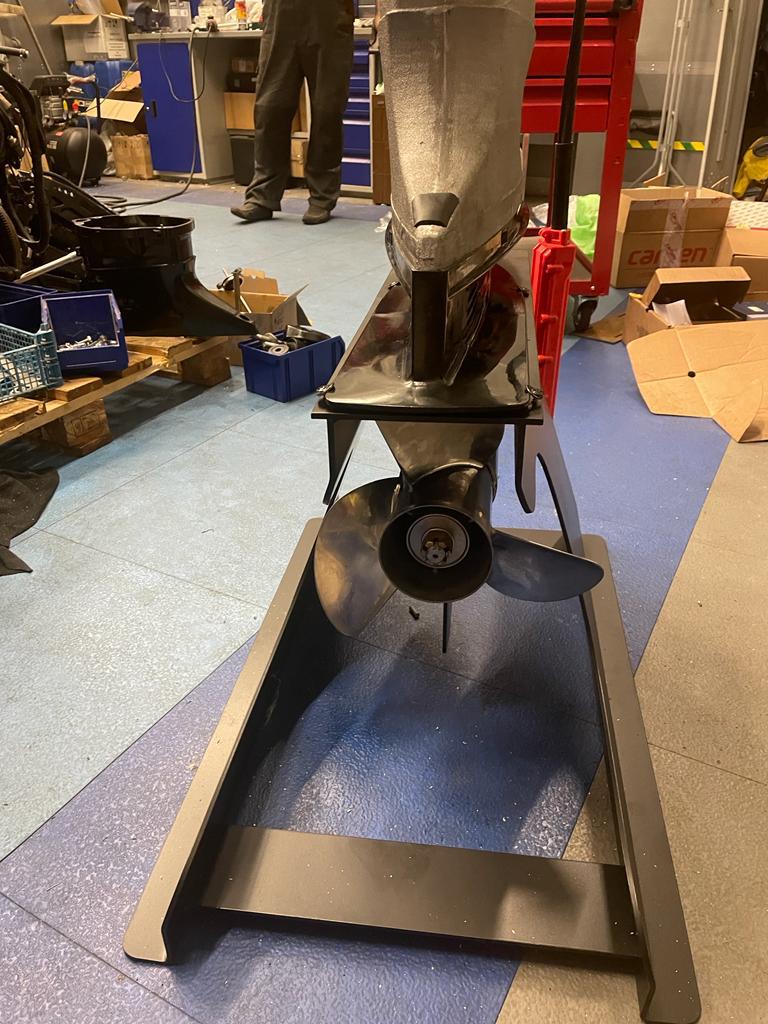22.12.2023 - Aluminium Association
After a lengthy hiatus, Russia is resuming the production of outboard motors. Prototypes of the first motor are currently undergoing bench tests, with one of them showcased at the NEVA’23 exhibition in September. The design is based on the 80-hp VAZ-11182 commercially available engine with components made from the AK12ch aluminium alloy, which has proven its worth in the automotive industry.

Staying afloat
The full-scale production of outboard motors in Russia has experienced ups and downs. It began in the 1950s and 1960s, flourished in the 1970s, and began to gradually decline from the early 1980s. Mass motor production was ultimately halted in 2008. However, the demand for boat motors has always remained high.
The most conservative estimate is that there are over 3 million owners of boats up to 12 metres in length in Russia. Unsurprisingly, the market gap was swiftly filled by global brands. According to the Aluminium Association, the annual import volume has recently exceeded 150,000 units. There was simply no driving force in Russia that would commit to restarting production.
In 2020, the mission to develop and launch a domestic outboard motor was taken up by Patriot R&D, a resident of the Dubna special economic zone.
Outboard motor specifications: Engine
Type: 4-stroke in-line
Number of cylinders: 4
Compression ratio: 10.5
Displacement, cm3: 1,597
Gearbox
Gear ratio: 2.31 (30/13)
Shift positions: Forward — Neutral — Reverse
Propeller: K (13")”)
Propeller rotation direction: clockwise
Fuel and oil
Fuel: OCH95 petrol
Engine oil: API SE, SF, SG, SH, SAE 10W-30, 10W-40
Engine oil volume, l: 4
Transmission oil volume, cm3: 670
Bracket
Tilt angle, degrees: -4 ... 6
Lift angle, degrees: 70
Steering angle, degrees: 35/35
Science, Business, Manufacturing
In 2022, Bauman University the Aluminium Association jointed the project. Patriot, as the initiator, invested RUB 35 million in the project. Moscow Region authorities granted RUB 10 million for the project.
 The Bauman University experts were responsible for R&D. They shared the casting technology and made casting prototypes at the University. Moreover, the Piston Engine Research and Education Centre at Bauman University provided benches for comprehensive testing of the boat motor prototype.
The Bauman University experts were responsible for R&D. They shared the casting technology and made casting prototypes at the University. Moreover, the Piston Engine Research and Education Centre at Bauman University provided benches for comprehensive testing of the boat motor prototype.
The Aluminium Association, on its part, promoted the project within the industry, supplied materials and provided consultations regarding the advanced casting alloys used in the automotive industry: AK6ch and AK12ch.
Currently, the manufacturing facility in the Dubna SEZ is being commissioned. The size of the industrial site is 2,000 sq m. The existing building of 1,358 sq m is sufficient for the batch assembly of 350...700 engines per year. The project managers believe that the target of 2,000 units per year, which is required to meet current market demand, is entirely feasible. Orders from the Russian Rescue Service, the National Small Boat Agency and other agencies total around 500 units.
The manufacturing facility in Dubna, Moscow Region, is fully integrated. For instance, the cast house will make unique castings. There will also be machining, final assembly, painting, packaging and shipment lines.
The Water Runner
 The pilot model is based on the commercially available VAZ-11182 motor for LADA Kalina cars. It is a 4-cylinder in-line 80 hp engine with a displacement of 1,597 cm3.
The pilot model is based on the commercially available VAZ-11182 motor for LADA Kalina cars. It is a 4-cylinder in-line 80 hp engine with a displacement of 1,597 cm3.
Naturally, you can’t just install a car engine on a boat: they operating conditions are very different. So the engine was tweaked. For instance, a car engine is horizontal, and its lubrication and cooling systems are designed for this. To fit it on a boat, the motor needs to be turned vertically. Therefore, the developers had to significantly modify many parts of the engine, retaining only the cylinder block, crankshaft, pistons, control system and cylinder cover.
A vertical engine requires special lubrication and cooling systems. Just note that boat engines are cooled by outboard water. Let us proceed. Unlike the original engine, the crankshaft is not connected to the gearbox but goes through auxiliary systems to the boat gearbox immersed in the water. This is how the torque is transferred to the propeller.
And it is not all modifications yet. They designers developed a lubrication system that prevents dry starts after long idle periods. Innovative oils and lubricants double the engine life compared to imported models without compromising performance. The engine also features a reliable fuel injection system that can operate even under extreme weather.
"A boat engine is very different, all its systems are also different. In essence, the boat motor and the original VAZ car engine are two different engines," confirms Yuri Fokin, project’s manufacturing engineer who works for Patriot and Bauman University.
The pilot model of the domestic outboard motor incorporates 11 unique castings made from the AK12ch aluminium alloy.
Aluminium Overboard
 Let us talk about the outboard motor components designed from scratch. These are all quite bulky items: the valve cover, oil sump, tray, and middle and lower crankcases. In total, the pilot engine contains 11 unique aluminium alloy castings.
Let us talk about the outboard motor components designed from scratch. These are all quite bulky items: the valve cover, oil sump, tray, and middle and lower crankcases. In total, the pilot engine contains 11 unique aluminium alloy castings.
"Of course, some parts could have been made from cast iron, but even the automotive industry is moving away from cast iron cylinder blocks. The unique parts cast by us and all the attachments are made of lightweight aluminium because weight is extremely important for a boat motor “, says Yuri Fokin.
The overall weight of the aluminium components in the 200-kg motor is approximately 30 kg. The AK12ch alloy ("ch" stands for "pure"), from which the engine components are manufactured, has already established its reputation in the automotive industry: it has excellent casting and mechanical properties and can be easily machined. 30 kg is the weight of the finished aluminium components, There is more metal in the castings due to machining allowances and runners.
“We can confidently state that one motor takes 45 kg of raw aluminium. This accounts for machining chips and dust", Yuri Fokin clarifies.
The primary metal, supplied with the support of the Aluminium Association, was used from the outset, for instance, for the creation of two prototypes. This will continue into full-scale production.
Verify the Specs
According to the designers, the fuel consumption of the 80-hp outboard motor will stay within the range of the original VAZ engine, that is, around 7 litres/100 km. However, it is not a car, so there are more factors to consider: the vessel weight, wave height, and so on. The same principle applies to the range on a single tank: here we should consider the fuel tank capacity which varies depending on the boat model. It is also worth noting that it is not uncommon for two or even three outboard motors to be installed on the transom (the rear end of the hull).
It is also challenging to determine the speed that a boat equipped with an 80-hp engine can achieve. This time, the characteristics of the propeller, usually selected by the customer, will be a significant factor among others. However, it is definitively known that the domestic outboard motor is designed for boats with a hull length of 5 to 6 metres. 4.7x2 metre boats are most popular in Russia. For the aluminium hull weight of 320 kg, a 60 hp motor is sufficient.
The project partners plan to develop a range of 100 and 150-hp engines, also based on the VAZ 16-valve car engine, which AutoVAZ will resume in 2024. The ball is now in the car giant’s court. The project of an outboard ~150 hp diesel engine is also generating significant interest. It is currently in the conceptual design phase.
The overall weight of the aluminium components in the 200-kg motor is approximately 30 kg.
Which Horse Is Faster?
Initially, the developers of the domestic outboard motor followed the renowned Japanese manufacturer Yamaha, whose product range includes 100 and 115-hp engines. This brand, among others, has left the Russian market, making it impossible to purchase a Japanese engine officially. However, the Japanese have been replaced by the Chinese with their Parsun and Hidea brands. With a 100 hp capacity, these engines from China are direct competitors to the Russian product.
One of the advantages of our engine is its low operating costs, thanks to its simple and reliable design. We should also mention the availability and relatively low cost of spare parts. The developers also promise extended service intervals and easy access to serviceable parts.
The outboard motor is based on a standard 80-hp engine.
During the Soviet era, up to 30 hp outboard motors offered by the domestic industry, were popular among watercraft owners. Such engines were only suitable for small pleasure boats, but in skilled hands, they were capable of much more. Now, Chinese companies have firmly established themselves in this power range, making it impossible to compete with them on price. However, the niche for engines for the Russian Rescue Service, the National Small Boat Agency where high-tech, high-power motors are in demand, can and should be filled by domestic manufacturers.
What Is in the Motor Name?
Once upon a time, outboard motor models were given resonant, sometimes even poetic names: Seagull, Kama River, Fireworks, Arrow, Whirlwind...
The power range of the pilot model is 80...100 hp. The range will be extended in the future up to 150 hp.
The name of the engine, which is being put into production in Dubna, is still under consideration. It may be launched under the Patriot brand, a logical choice, given that Patriot is the initiator of the project. Maybe, names like Bauman or RuSail would generate interest among supporters of domestic science and technology. It seems that the name will be selected soon.
According to Yuri Fokin, the priority now is to start the production of 80-100 hp engines based on the readily available VAZ engine and to continue from there.
The Dubna SEZ production facility will do it all: casting unique engine components, machining, and final assembly.

